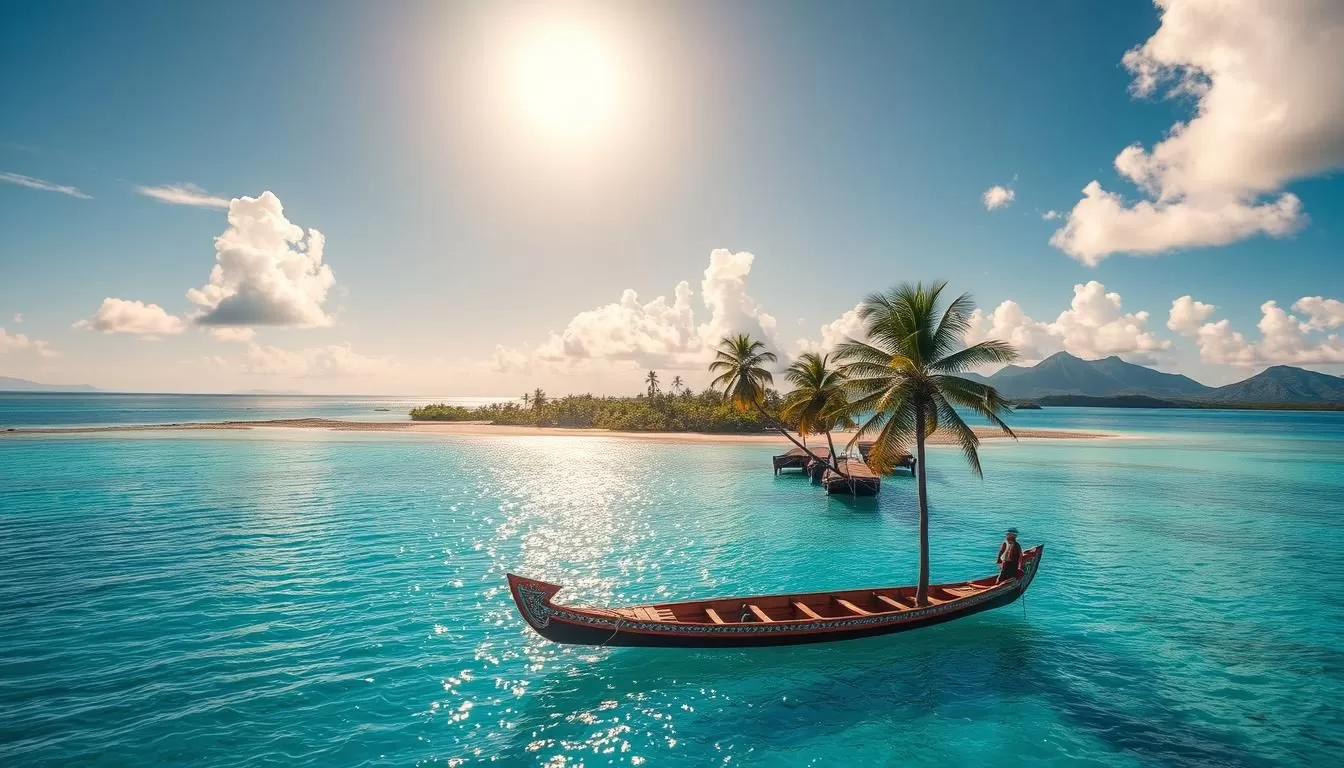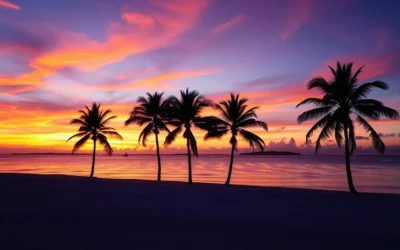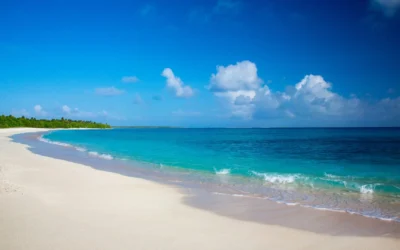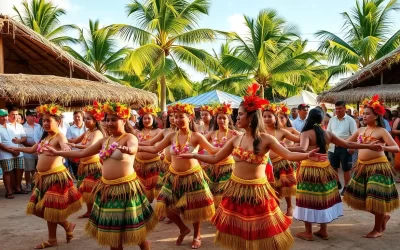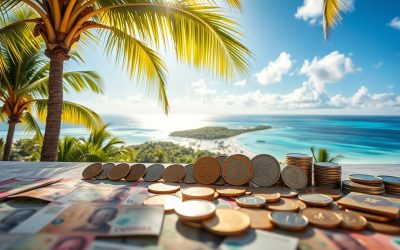Planning a trip to the Marshall Islands requires understanding the unique weather patterns of this Pacific island nation to ensure you have the best possible experience.
The climate is hot, oppressive, windy, and overcast, with temperatures typically varying from 80°F to 86°F throughout the year. To make the most of your visit, it’s crucial to identify the optimal time based on your preferred activities and comfort levels.
From temperature patterns to rainfall and wind conditions, this guide will help you navigate the year-round climate, ensuring you’re prepared for your trip. The period from January to April is generally considered the prime window for visiting, with clearer skies and less rainfall.
Understanding the Marshall Islands Climate
The Marshall Islands’ climate is marked by steady temperatures, making it an ideal destination for travelers seeking warm weather. Understanding the climate is crucial for planning your trip.
Geographic Location and Its Impact on Weather
The Marshall Islands are situated near the equator in the Pacific Ocean. This geographic location contributes to the islands’ relatively stable and warm climate throughout the year. The proximity to the equator means that the islands receive a consistent amount of solar radiation, which maintains the temperature.
Year-Round Temperature Patterns
The temperature in the Marshall Islands varies minimally throughout the year. The average daily high temperature ranges from 85°F to 86°F, while the lows are around 80°F. This minimal variation of just 6°F between the annual minimum and maximum temperatures means that you can expect warm conditions regardless of when you visit.
| Period | Average High Temperature | Average Low Temperature |
|---|---|---|
| January to December | 85-86°F | 80°F |
| Daily Variation | About 5°F | |
The consistent temperature patterns, with average highs and lows remaining relatively stable, make the Marshall Islands a great destination for travelers who prefer warm weather without significant seasonal changes. You can enjoy water activities throughout the year due to the warm ocean temperatures, ranging from 83-85°F.
Marshall Islands: Best Months for a Weather-Savvy Trip
When planning a trip to the Marshall Islands, understanding the best time to visit is crucial for a weather-savvy journey. The Marshall Islands have a distinct wet and dry season, which significantly impacts the travel experience.
January to April: The Prime Visiting Window
The period from January to April is considered the prime visiting window for the Marshall Islands. During these months, the weather is generally dry, with minimal rainfall. This dry season makes it ideal for outdoor activities such as snorkeling, diving, and exploring the islands. With less than 4 inches of rainfall throughout this period, you can enjoy your trip without the hindrance of frequent rain showers.

Shoulder Seasons: May-June and November-December
For travelers who are flexible with their plans, the shoulder seasons of May-June and November-December offer a good compromise. May and June mark the transition into the wetter season, with rainfall gradually increasing to 7.2-7.8 inches, but still offering many days suitable for outdoor activities. November and December represent the transition out of the wettest period, with November experiencing 9.4 inches of rainfall, but December showing improvement with 7.6 inches as conditions move toward the drier season.
| Month | Rainfall (inches) | Wet Days |
|---|---|---|
| May | 7.2 | 16 |
| June | 7.8 | 18 |
| November | 9.4 | 20 |
| December | 7.6 | 18 |
These shoulder months can offer value for budget-conscious travelers, with potentially lower accommodation rates and fewer crowds at popular sites. While there is a higher chance of rain, the showers are often brief and localized, with plenty of sunshine between them, allowing for flexible itineraries.
Rainfall Patterns Throughout the Year
The Marshall Islands’ rainfall varies significantly across different months, impacting tourist activities. Understanding these patterns is crucial for planning your trip.
Wet Season: April to December
The wet season in the Marshall Islands lasts from April to December, with increased rainfall throughout this period. During these months, you can expect more frequent rain showers, which might affect your outdoor activities.
- The wet season brings significant rainfall, with some months experiencing over 10 inches of rain.
- The daily chance of precipitation is higher during this period, making it less ideal for certain outdoor activities.
Drier Months: January to March
From January to March, the Marshall Islands experience their dry season, with February being the driest month. This period is characterized by less rainfall and more consistent weather patterns, making it ideal for outdoor activities and exploring historical sites.
- February averages just 10.2 days with measurable precipitation and a total rainfall of only 4.6 inches.
- The reduced rainfall and slightly lower humidity levels make this period perfect for beach activities and excursions.
Sunshine and Cloud Cover by Month
Sunshine and cloud cover in the Marshall Islands follow a distinct pattern that can enhance your travel experience. Understanding these patterns is key to making the most of your trip.
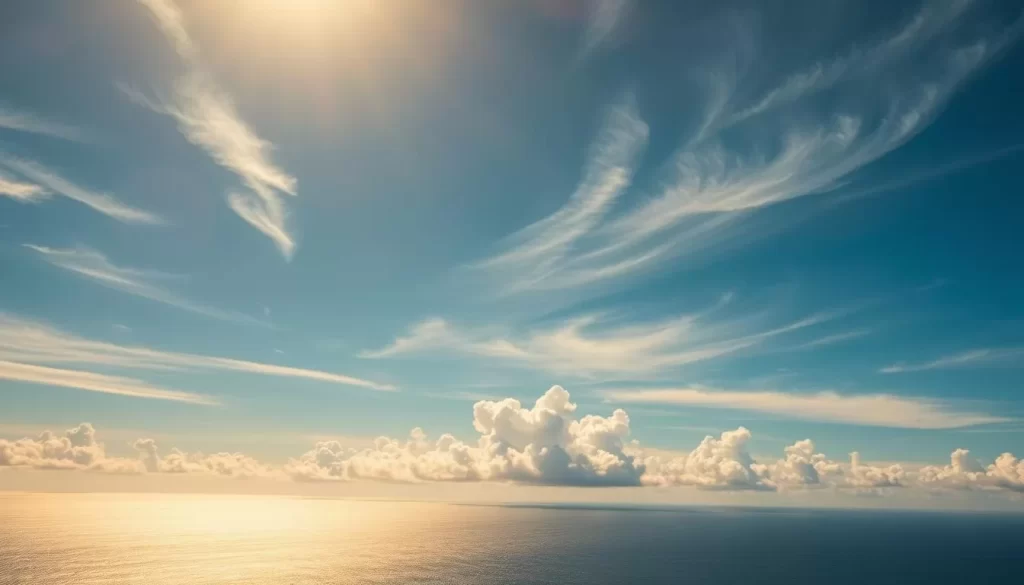
Clearest Skies: February and March
The months of February and March offer the clearest skies in the Marshall Islands. During this period, the sky is generally clearer, providing ideal conditions for outdoor activities and sunbathing. With an average daily incident shortwave energy of around 6 kWh per square meter, these months receive the most sunlight throughout the year.
Overcast Periods: September to November
In contrast, the period from September to November is characterized by overcast skies. November is the cloudiest month of the year, with the sky being overcast or mostly cloudy 85% of the time. Some key points to consider during this period:
- The reduced sunshine results in lower solar radiation levels, with November receiving just 4.3 kWh of daily incident shortwave energy per square meter.
- The persistent cloud cover creates diffused lighting conditions, beneficial for certain types of photography.
- Despite the cloudiness, temperatures remain warm, around 86°F (30°C).
- The increased cloud cover correlates with the peak of the wet season, often resulting in afternoon or evening showers.
- Visitors should plan indoor or cultural activities and remain flexible to take advantage of clearer periods.
By understanding these patterns, you can better plan your activities and make the most of your day in the Marshall Islands.
Wind Conditions and Their Seasonal Variations
Seasonal wind variations play a significant role in determining the best time to visit the Marshall Islands. Understanding these wind patterns can help you plan your trip more effectively, whether you’re interested in water activities or simply want to enjoy the islands’ serene beauty.
Windy Season: November to June
The windy season in the Marshall Islands lasts for approximately 7.2 months, from November to June. During this period, you can expect higher wind speeds, which might affect your outdoor and water activities. The increased wind can make the temperature feel more comfortable, but it may also lead to rougher seas.
Calmer Months: July to October
The calmer period, lasting 5.2 months from June 21 to November 27, offers a more tranquil experience. September is the calmest month, with an average hourly wind speed of 9.4 miles per hour. During these months, the reduced wind creates glassy, tranquil waters, ideal for snorkeling, diving, and other water activities. For instance, the calmer conditions enhance visibility underwater as sediment settles, and they also create perfect conditions for drone photography and capturing reflections in the lagoon waters. However, the lighter winds coincide with the peak of the wet season, presenting a trade-off between calm seas and increased likelihood of rain showers.
Water Temperature and Ocean Activities
When planning your trip to the Marshall Islands, understanding the water temperature and sea conditions is essential for making the most of your ocean activities. The average water temperature remains relatively consistent throughout the year.
Best Months for Swimming and Snorkeling
The Marshall Islands are ideal for swimming and snorkeling due to their warm and clear waters. The water temperature stays within a comfortable range of 83-85°F (28-29°C) throughout the year, making it perfect for these activities. You can enjoy swimming and snorkeling year-round, but the month of January to April is particularly favorable due to calm sea conditions.
Diving Conditions Throughout the Year
Diving in the Marshall Islands is a year-round activity, thanks to the warm sea temperatures. The best diving visibility is typically during the drier months from January to March, with visibility often exceeding 100 feet. While the wetter months can bring more rainfall, the calmer wind conditions during this period can make for smoother boat entries and exits. The consistent temperature allows for comfortable diving with minimal exposure protection.
Humidity Levels and Comfort Factors
Understanding humidity levels is crucial for a comfortable trip to the Marshall Islands. The tropical climate means that the humidity is generally high throughout the year.
Managing High Humidity
The Marshall Islands experience high humidity year-round, which can be challenging for some visitors. To manage this, it’s recommended to stay hydrated by drinking plenty of water and to take breaks in shaded or air-conditioned areas. Loose, light clothing can also help keep you cool. By taking these precautions, you can enjoy your time on the islands more comfortably.
During your visit, consider the time of year and plan accordingly. The data suggests that while humidity remains high, certain periods offer more comfortable conditions for outdoor activities.
Beach/Pool Score for Outdoor Activities
The beach/pool score is a useful indicator of when the Marshall Islands are at their best for outdoor activities. Based on this score, the best time of year to visit is from early January to early April, with the peak score occurring in the third week of February. This period offers the best combination of clear skies, lower rainfall, and comfortable temperatures, making it ideal for enjoying beaches, lagoons, and pools.
By planning your trip during this period, you can maximize your enjoyment of outdoor activities. The score takes into account factors like clear days and perceived temperature between 75°F and 90°F, ensuring that your day is filled with pleasant weather.
Planning Around Daylight Hours
The Marshall Islands offer a relatively consistent daylight pattern throughout the year, making it easier to plan your daily activities. With the length of the day staying within 32 minutes of 12 hours throughout the year, you can establish a reliable daily routine.
Sunrise and Sunset Patterns
The early sunrise, typically between 6:17-6:53 AM, provides an opportunity for morning activities before the heat of the day peaks. This makes early morning ideal for hiking, jogging, or photography. Sunset consistently occurs around 6:13-6:55 PM, creating dependable evening golden hours for photography and sunset viewing opportunities year-round.
Maximizing Daylight for Activities
With consistently around 12 hours of daylight throughout the year, you can plan your activities without significant adjustments for daylight changes. Many visitors adapt to the natural rhythm of the islands by rising with the early sunrise and concluding major activities by sunset. However, night activities like stargazing can be excellent in clear weather.
| Time of Day | Activity Suggestions | Best For |
|---|---|---|
| Early Morning (6:17-6:53 AM) | Hiking, jogging, photography | Cooler temperatures, golden light |
| Evening (6:13-6:55 PM) | Sunset viewing, photography | Golden hour, relaxed atmosphere |
| Night | Stargazing | Clear weather, minimal light pollution |
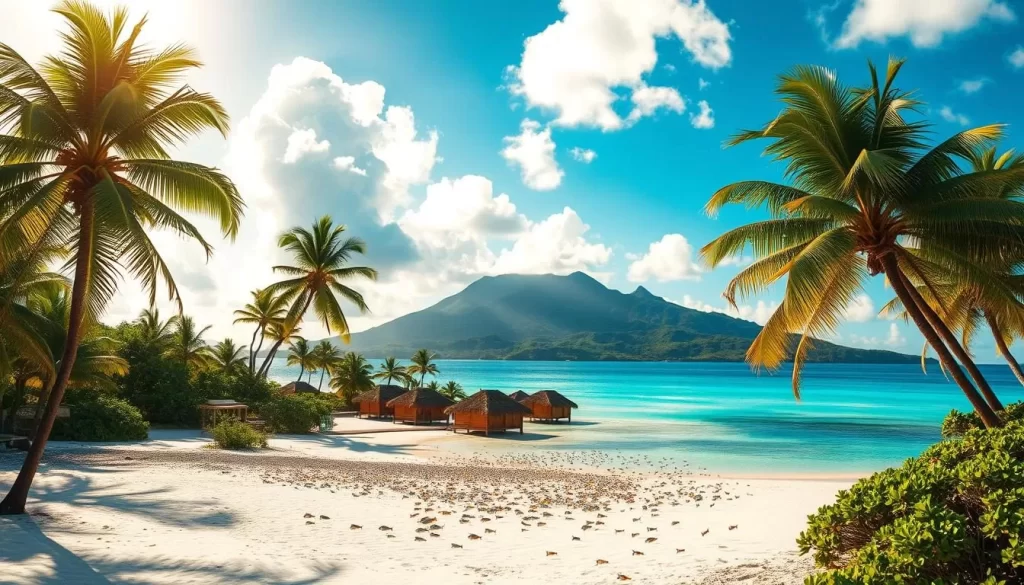
Best Months for Specific Activities
When planning your trip to the Marshall Islands, understanding the best time for specific activities can greatly enhance your travel experience. The islands offer a range of activities, from beach relaxation to cultural exploration, each with its optimal timing.
Optimal Times for Beach Activities
The best time for beach activities in the Marshall Islands is from mid-January to mid-March. During this period, you can enjoy clear skies and comfortable temperatures, making it ideal for swimming, snorkeling, and sunbathing. The tourism score, which favors clear, rainless days with perceived temperatures between 65°F and 80°F, peaks in the third week of February, making it the perfect time for outdoor activities.
Ideal Periods for Cultural Exploration
Cultural exploration in the Marshall Islands is possible year-round, but the January to March period offers the most reliable weather for visiting outdoor cultural sites. The drier months allow for more comfortable walking tours of historical sites, including WWII relics and traditional meeting houses. Additionally, the slightly lower humidity and consistent cooling breezes during January-March create more comfortable conditions for engaging in cultural activities. For photographers, the clearer skies during February and March provide better lighting conditions for documenting cultural sites and practices.
Weather Considerations for Island Hopping
The Marshall Islands, comprising 29 atolls and 5 islands spread across approximately 750,000 square miles of ocean, present a unique challenge for travelers due to their vast geographical spread. When planning a trip to these islands, understanding the weather considerations for island hopping is crucial for a smooth journey.
Inter-Island Travel and Weather Impacts
Inter-island travel in the Marshall Islands can be significantly affected by weather conditions. The distance between island groups is substantial, with some requiring overnight boat journeys. February and March offer the most reliable weather window for ambitious multi-island itineraries, with lower rainfall and moderate wind conditions creating fewer weather-related disruptions.
During the wetter months (September-November), consider a hub-based approach where you stay longer on major islands and make day trips when conditions permit. This flexibility is key to managing the unpredictable nature of transportation in this remote archipelago.
Planning Multi-Island Itineraries
When planning multi-island itineraries, building in buffer days is essential regardless of the season. For itineraries focusing on the outer islands, which often have more limited transportation options, the January to April period provides the best chance of adhering to planned schedules.
| Period | Weather Conditions | Ideal For |
|---|---|---|
| January to April | Lower rainfall, moderate winds | Outer island itineraries |
| February to March | Most reliable weather | Ambitious multi-island itineraries |
| September to November | Wetter months | Hub-based itineraries with day trips |
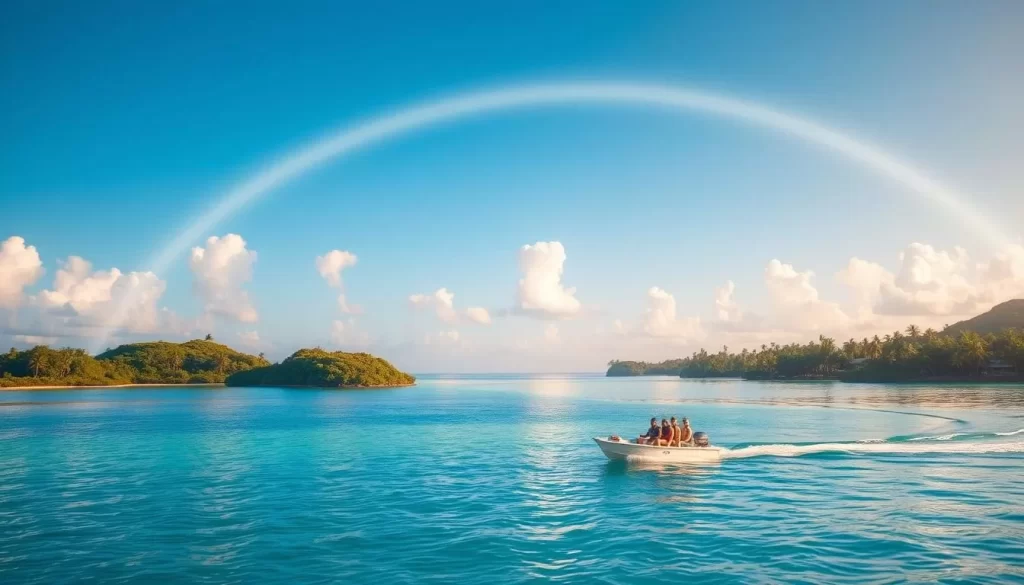
Packing Tips for Different Seasons
To make the most of your Marshall Islands visit, it’s crucial to pack wisely based on the time of year you’re traveling. The islands’ climate varies significantly across different seasons, impacting your travel experience.
Essential Items Year-Round
Regardless of the season, certain items are essential for your trip to the Marshall Islands. You should always pack waterproof or water-resistant footwear to handle wet conditions and protect your feet from sharp coral. Additionally, consider packing clothing that can be easily mixed and matched, as well as a light long-sleeved shirt for sun protection. The high humidity and temperature year-round mean that breathable clothing is also a must.
- Quick-dry clothing
- Sun protection (sunscreen, hat, sunglasses)
- Insect repellent
Season-Specific Packing Recommendations
The Marshall Islands experience a windier period from November to June and a wetter season from April to December. For visits during the windier months, consider packing a light windbreaker or wind shell. During the peak wet season (September to November), include a lightweight, packable rain jacket or poncho, and possibly a small travel umbrella. For the drier months (January to March), you may need fewer changes of clothes, but still pack for hot conditions.
Conclusion: Making the Most of Your Marshall Islands Visit
The Marshall Islands, with their unique tropical experience, are a destination that benefits greatly from weather-savvy travel planning. Understanding the weather patterns can significantly enhance your visit to this remote Pacific paradise.
The best time to visit the Marshall Islands for hot-weather activities is from early January to early April, with peak conditions in February. During this period, you can enjoy lower rainfall, clearer skies, and good wind conditions. For those with flexibility, February and March offer the best overall conditions, balancing lower rainfall with moderate winds and excellent conditions for both water activities and cultural exploration.
Regardless of when you visit, expect consistently warm temperatures and high humidity. The Marshall Islands rewards travelers with stunning lagoons, rich cultural experiences, and the warm hospitality of the Marshallese people. To make the most of your visit, embrace flexibility, build buffer days into your itinerary, and come prepared with the right gear and mindset.
With the right approach, the Marshall Islands can be a wonderful destination at any time of the year, offering a unique experience that shines through in any season.
The above is subject to change.
Check back often to TRAVEL.COM for the latest travel tips and deals.
